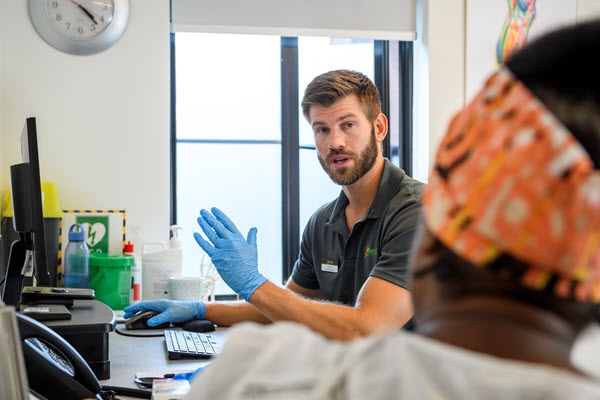What is
Vestibular assessment & rehabilitation?
A multi-modal form of rehabilitation for balance symptoms including dizziness, vertigo and unsteadiness; vestibular rehabilitation involves exercises, advice and psychologically informed education in order to restore equilibrium within the balance centres in the brain.
This treatment promotes recovery from damage arising from the inner ears, the nerves that transmit signals from the inner ears, or disruption within the brain centres themselves that are responsible for processing these signals.
The exercises are progressed to gradually promote compensation within these structures to strengthen them, which in turn treats the perception of dizziness, vertigo and unsteadiness, and symptoms gradually reduce as tolerance increases.
We can help with:


What to expect at your 1st appointment.
Treatment sessions will consist of appropriate advice, education and exercises to treat the individual and the unique factors at play from person-to-person.
For some conditions there may be manoeuvres which fully resolve the problem in a single session, or within a couple of sessions. Most conditions require time for the balance centres to adapt and compensate for the disruption that has occurred.
Vestibular assessment generally requires very little equipment clinically, detailed interpretation of eye movements, head movements and balance control, as well as some tests to diagnose more specific conditions of the inner ear. We do offer some equipment for hire, including the DizzyFIX device and photophobic (light sensitivity) glasses.
Treating any dysfunction within the neck, whether from the joints of the spine or the surrounding muscles, can help facilitate the rehabilitation of vestibular disorders. Although dizziness very rarely stems from the neck, it can be helpful to treat associated issues there.
If further investigation is required, we will contact your referrer (GP, Neurologist or ENT doctor) and make the appropriate recommendations.
I have been seeing Nick for Vestibular issues and I just wanted to say thank you for making me feel normal again.
PB has completed the pt survey and given us 20/20.
She also called to say how wonderful you were Nick, she was so relieved and grateful to have met you and that you were able to help her. She said she feels she’s got a new lease of life thanks to you.
Frequently asked questions.
The primary purpose of vestibular assessment is to diagnose the presence, nature, and severity of vestibular dysfunction. This involves a series of tests designed to evaluate the vestibular system, which includes parts of the inner ear and brain that help control balance and eye movements. These assessments help in identifying the cause of symptoms such as dizziness, vertigo, balance issues, and visual disturbances.
Three of the most frequent tests we use are
- Videonystagmography (VNG): This test measures eye movements to assess the function of the vestibular system. It is used to determine if a vestibular disease may be causing a balance or dizziness problem.
- Rotary Chair Test: This test evaluates the function of the vestibular system by moving the patient in a controlled, rotating chair while eye movements are monitored. It helps in differentiating between central (brain-related) and peripheral (ear-related) causes of dizziness.
- Vestibular Evoked Myogenic Potentials (VEMP): This test measures the sound-induced reflexes of muscles in the neck and eyes, helping to assess the saccule (part of the inner ear) and the vestibular nerve, which are important for maintaining balance.
Vestibular Rehabilitation Therapy (VRT) is a specialised form of therapy intended to alleviate both primary and secondary problems caused by vestibular disorders.
It is designed for individuals experiencing dizziness, balance difficulties, vertigo, motion sensitivity, and other symptoms associated with vestibular dysfunction. VRT aims to restore normal function of the vestibular system or to develop compensatory mechanisms through a customised program of physical exercises.
There are many that we use but to give you one example
Gaze Stabilisation Exercises: These exercises aim to improve control of eye movements so that vision can remain steady while the head is moving. Patients focus on a stationary object while moving their head side to side or up and down. This type of exercise is beneficial for improving visual focus and reducing symptoms of dizziness and vertigo during head movements.
Successful vestibular rehabilitation can lead to a significant reduction or elimination of symptoms. Outcomes may include improved balance, decreased sensation of dizziness, reduced risk of falling, better coordination, and an overall enhanced ability to perform daily activities. Additionally, patients often experience an improvement in their quality of life, as they can return to their normal routines with more confidence and less discomfort.








